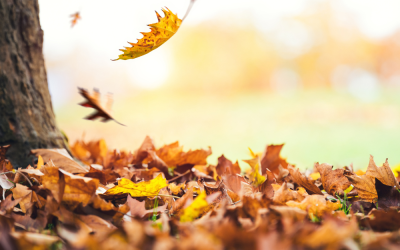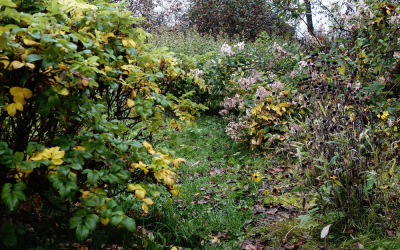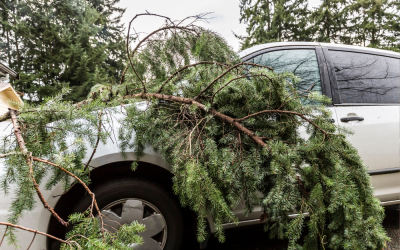The importance of trees to the health of our planet and its inhabitants cannot be underestimated, which is why the prevention of tree disease is so important.
Why Trees Matter
They Protect Our Planet
Trees matter: they’re vital to the delicate balance of our planet’s ecosystem – without which human food sources would be affected, and countless species of wildlife would die out.
They contribute to the prevention of climate change and subsequent extreme weather events, absorbing carbon dioxide as they grow and storing carbon in their wood to slow the rate of global warming as well as reducing wind speeds and cooling the air through their leaves.
They Help Keep Us Healthy
Not only this, but they also benefit health: their canopies act as a physical filter to trap pollutants and dust and help to improve air quality – and research has also shown that being close to natural green spaces can benefit emotional and mental health. Trees are an essential part of our landscape, adding natural beauty to our landscape and providing countless benefits that often go unthought of.
What Are Tree Diseases?
Tree diseases occur wherever there is a change in the tree’s appearance, or if the tree is unable to function normally due to infection, toxins or physical damage.
There are about a hundred diseases for each of the thousands of plant species .While some tree diseases merely affect the physical appearance of the tree and do not cause any significant damage to its structure, others can be devastating, causing widespread infection and even death.
Causes Of Tree Diseases
While some causes of tree disease are natural, others are caused by human disruption caused by deforestation (also a leading cause of climate change), mechanical damage and pollution.
Tree diseases have both abiotic (living) and biotic (non-living) causes such as bacteria, fungi and viruses.
Causes of tree diseases are not limited to but can include the following:
Drought
Drought, whether through overcrowding or physical damage can create stem damage, creating “wounds” that allow pathogens to enter the roots and stems, affecting the ability of trees to take in water.
Although they are not vulnerable to emotional stress in the same way that humans are, trees and plants experience their own form of stress when impacted like this – yet similarly to us, this stress can create reactions that leave trees vulnerable to disease.
When root and stem damage takes place, the stress caused to the tree weakens its structure, making it even more susceptible to infection and reducing its ability to isolate infections and prevent their spread throughout the rest of the tree.
Pollution
Studies have shown that the global increase in carbon dioxide (caused in part by deforestation) affects both soil and air quality, which in turn has a major detrimental impact on trees themselves, stunting their growth and affecting their ability to take in nutrients.
Acid rain – while not directly killing trees – is likely to weaken their structure by damaging their leaves and reducing available nutrients. Acid rain can also poison trees and plants when toxic substances such as aluminium are released into the soil.
Mechanical Damage and Deforestation
Mechanical tools such as line trimmers can also cause injury to trees. Improper use or overuse of such tools can lead to the removal of vegetation at the base of the tree necessary for its survival, or else it can create a mechanical bark wound, allowing pathogens to infect the tree.
Deforestation
While certain instances – such as immediate danger to the public – call for the felling of trees, certain practices such as unsustainable or even illegal deforestation (where trees are not replanted and are simply cleared to make way for farmland or for buildings can also cause surrounding trees to be damaged in the process.
In certain other cases, wildfires and overgrazing can also prevent the growth of young trees – and while both of these are natural occurrences, they can also be traced back to human intervention due to the way climate change affects wildlife and weather systems.
Invasive Species
Where non-native species of plants and animals are introduced to local ecosystems, they can over-run and even wipe out local species causing major imbalances. Invasive species of plant and fungi can degrade the quality of the soil, impacting water quality and impeding the ability of trees to grow and flourish.
Invasive animal species also create a negative impact: the introduction of non-native deer that feed on tree saplings prevents tree’s ability to naturally regenerate, while certain species of insect (introduced both deliberately and accidentally) such as Asian and Citrus Longhorn beetles can cause damage to trees and surrounding wildlife, killing off local species and introducing new diseases.
Parasites
In most cases, a parasite is a pathogen, but the reverse isn’t always true: while some parasites are harmless and may even be beneficial, others can. In certain cases, local trees have not developed “immunity” to diseases caused by invasive or damaging parasites and can suffer as a result.
How To Identify Tree Diseases
Tree diseases can be identified in a number of ways including:
- Changes to the appearance of tree such as white rust
- Defoliation and crown thinning (loss of leaves)
- Wilting
- Decay
Common Tree Diseases
To prevent the spread of disease in trees, it’s important to know what to look out for so you can identify the disease early and minimise damage. Types of tree disease usually falls under the following categories:
Tree Leaves Disease
The main causes of diseased foliage are fungal, however they can also be caused by insect infestation. Leaf disease may appear as:
Spots
One of the most common types of hardwood leaf disease is anthracnose, a common fungus which causes dark lesions to form on the flowers, stems and fruits of deciduous trees. As anthracnose mainly affects the appearance of the tree, treatment isn’t essential, but it can make trees appear unsightly.
Rusts
One example of leaf rust is cedar apple rust, which affects both the fruit and leaves . After spending it’s first year living on a cedar tree, in springtime spores are carried by the wind to infect apple and crabapple trees. This disease causes bright orange-yellow spots to form on fruit and leaves and swollen fruiting bodies on stunted twigs, in addition to the premature development of fruit.
Wilts
Oak wilt is a fungal disease affecting oak trees. While trees in the white oak family are less vulnerable, this disease can be fatal to red oak varieties. Oak wilt is passed from tree to tree through the roots or by sap-sucking beetles attracted to freshly cut timber.
Mildew Or Fungus
Powdery mildew occurs on leaves wherever there is a lot of humidity but little rain and often occurs in plants such as lilac and crape myrtle.
Pine Needle Disease
In general, there are three types of pine needle disease:
Needle rusts
This is the least dangerous of the three and causes an unsightly “rust” colour to develop on the needles of coniferous trees. White pine needle rust commonly affects five-needled pines, causing small yellow swellings at the base of needles which later develop into white blisters containing dusty orange spores. Cankers can also develop on the stem and can constrict it, causing it to die.
Needle casts
This is where fungi grows inside needles, causing needle loss. Stigmina and Rhizosphaera are two of the most common needle casts found mainly in blue spruces. While this disease can cause significant needle drop, it is treatable.
Needle blight
This is an infection inside the needle causing partial death. Diplodia tip blight is one of the most common blights, especially in Austrian pines. This blight stunts growth and turns needle tips yellow and brown, eventually killing them off.
Tree Bark Disease
This type of tree disease is usually caused by fungi and varies in severity depending on what part of the tree is affected. Some of the most common sub-varieties of this disease type are cankers, which occur when a bacterial or fungal pathogen enters the tree through a wound, blocking the vascular system and preventing the flow of nutrients.
Tree Root Disease
Diseases of tree roots impact the root and lower stem of both hardwood and evergreen species, preventing water and nutrient intake. Because tree root disease happens below ground, it can be difficult to diagnose. Phytophthora is one of the most common types of root rot and occurs in trees growing in poorly drained soil, which can give them a dry, wilted appearance.
Prevention And Treatment
Treatment for different types of tree disease depends on the type of disease involved. While healthy trees are generally able to combat pathogens by themselves, sometimes intervention is necessary to keep them healthy. The most common methods of treatment are:
Prevention
Staying ahead of potential future infections is usually the best way to keep them at bay. An application of fungicide on freshly cut stumps as well as on buds prior to opening can help protect against both insect and fungi infestation.
Pruning
Cutting away the damaged parts of a tree is a common technique to prevent the spread of disease throughout the tree, particularly in conditions such as tree bark disease. While branches are relatively easy to treat (as these can be removed), trunk diseases indicate an infection of the tree’s vascular system, which can cause tree death. As a result of this, felling is usually the only option.
Removal And Sanitation
Similar to pruning, this method involves cutting away the diseased foliage of trees to prevent further infections over the coming season.
Improvement Of Soil Condition
Vulnerability to infection relies on the tree’s general health, making it essential to optimise soil fertility and reduce drought stressors or alternatively, too much moisture.
Biological Control
Insects such as bark beetles can damage trees and carry pathogenic fungi. Introducing biological enemies (insects that can prey on pests) can help reduce the population of pests, helping to prolong the life of the tree.
Chemical Control
A form of treatment involving spraying with insecticides or fungicides, depending on the cause of disease.
Planting Resilient Species
In the case of diseases such as cedar apple rust, planting more resilient species of tree that can adapt to and tolerate pathogens can be a good method of disease prevention.
Loose Planting And Stand Thinning
These methods ensure better isolation of infection due to a reduction in overcrowding.
Delayed Reforestation
Although replanting trees is generally a positive measure to help promote a healthy and balanced ecosystem, some situations – such as when disease strikes – call for delayed reforestation in order to identify complete removal of the source of infection.
Monitoring tree disease
Finally, monitoring tree disease is one of the key methods of helping to prevent pests and disease through surveillance and reporting, which can help in the early identification, detection and treatment in our trees, forests and woodlands.
While it is possible to treat and prevent trees yourself, some methods may require the expertise of a trained arborist or tree surgeon. For local advice on the best tree reduction Manchester has to offer and stump removal Manchester has available, contact your local tree surgeon who can provide support and guidance from trained and skilled professionals.



